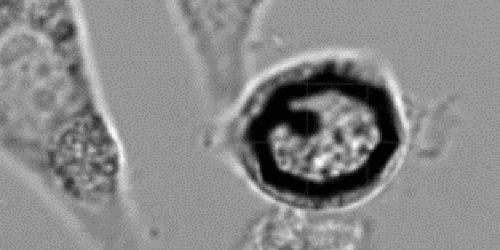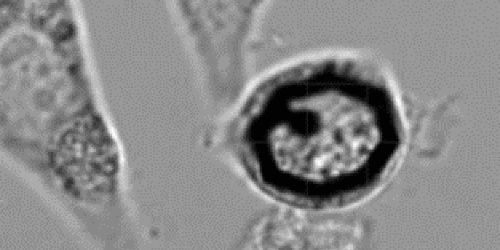Electronic Tagging for Cells
Electronic tags in the form of radio-frequency identification (RFID) devices are everywhere. They show up in key cards, e-passports, toll passes, you name it. H.-S. Philip Wong, Ada Poon, and colleagues at Stanford University, California, have now made an RFID tag that is small enough to be placed inside a cell. Such tags might one day be used to track and monitor individual cells wirelessly.
RFID systems consist of two main components: a tag attached to the object being identified and a transceiver that is located a short distance away. The transceiver sends wireless radio waves to the tag, and the tag—made up of a microchip and an antenna—responds with its unique identifying information. The tag’s size is mostly determined by the antenna, which is typically on the centimeter- to millimeter-diameter scale—too big to be embedded into cells.
Building on recent advances in nanofabrication and wireless powering of millimeter-scale electronic implants, Wong and colleagues have made a micrometer-scale RFID system. The device contains a tag that is only 22 m in diameter and two transceivers that are each roughly twice the tag’s diameter. The team showed that this novel two-transceiver design greatly increases the tag’s rf-signal magnitude by more than tenfold relative to the traditional single-transceiver design. They also showed that mouse melanoma cells can swallow the tag and remain intact. Future work will involve pumping RFID-tagged cells through a microfluidic channel and measuring their rf signals, one at a time, with the transceivers placed right underneath the channel. It will also include adding special sensors that affect the rf signals in response to changes in cellular parameters such as the pH level.
This research is published in Physical Review Applied.
–Ana Lopes
Ana Lopes is a Senior Editor of Physics.





